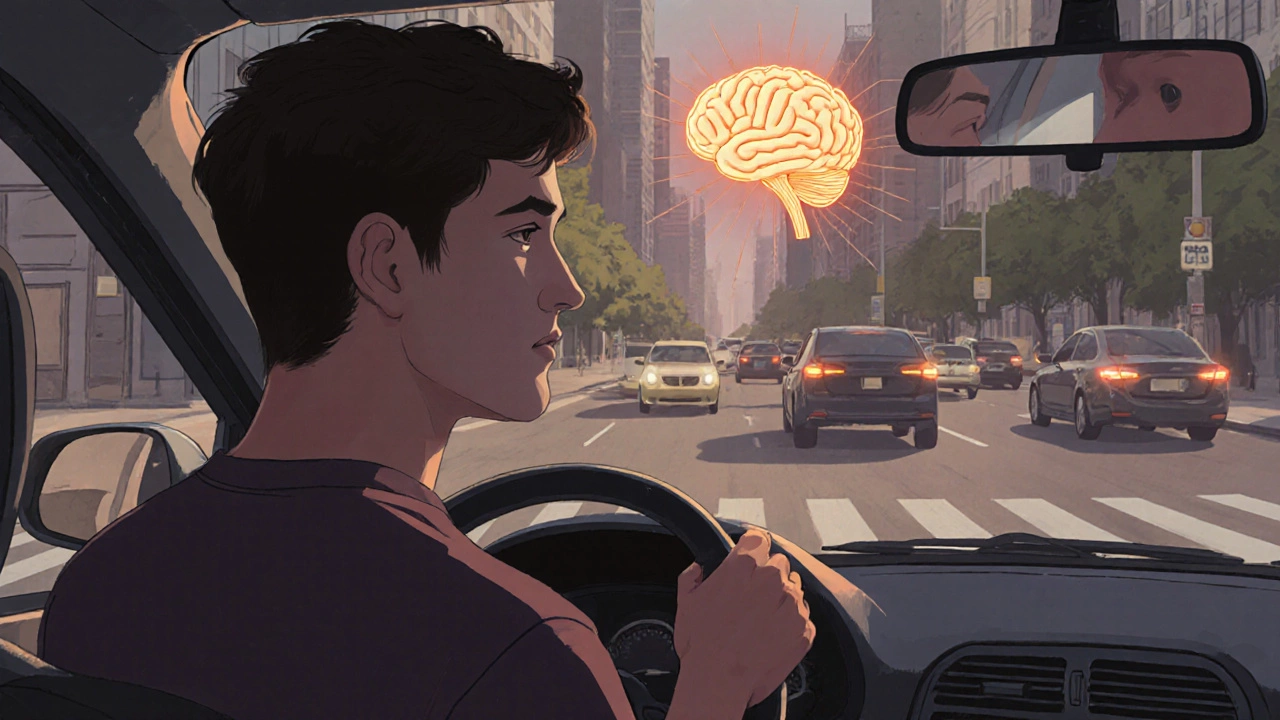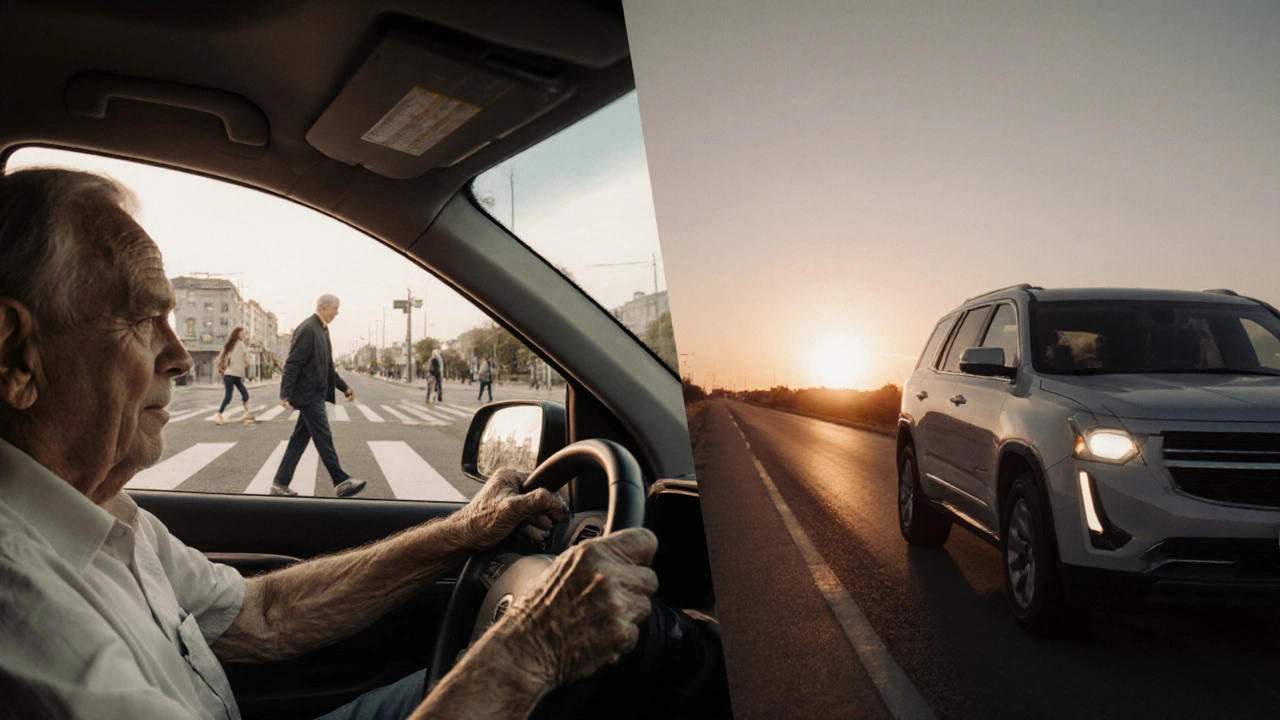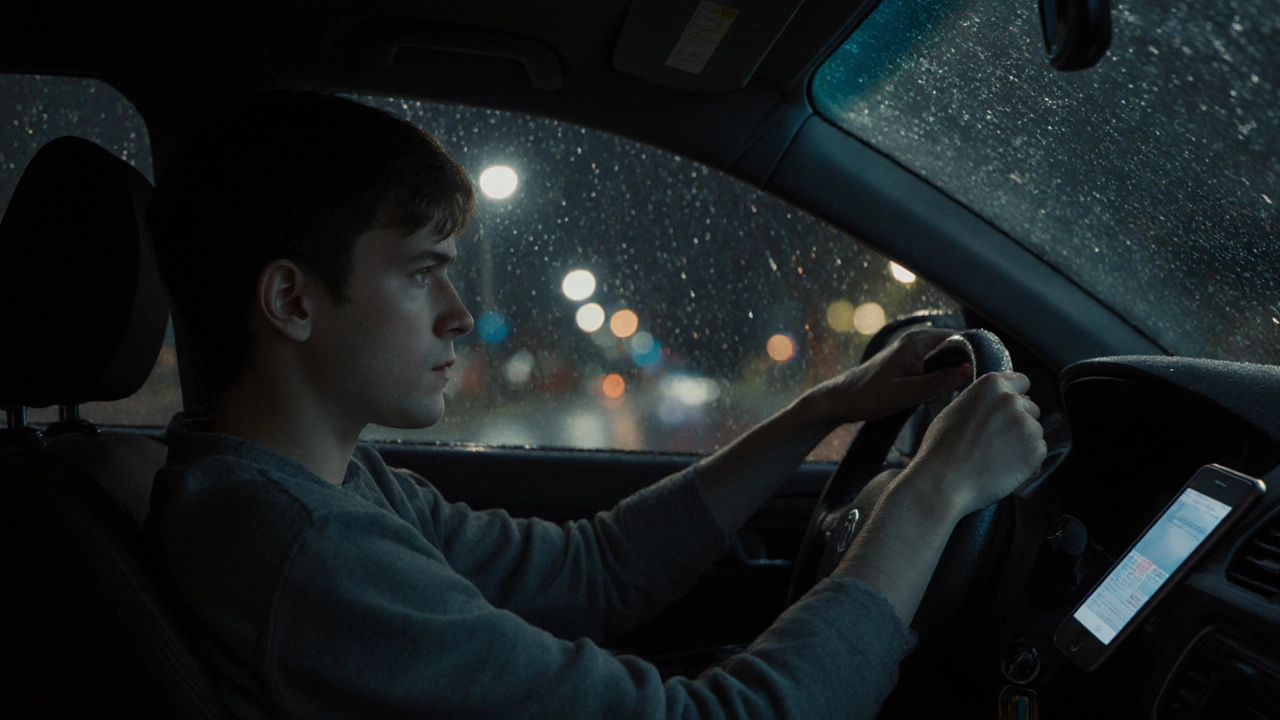Driving Safety Risk Calculator
Based on New Zealand data, driving safety depends more on experience than age. Calculate your risk level by entering your age and hours of supervised practice.
Your Safety Assessment
Risk Level:
Your Safety Score:
Recommendation:
Note: This calculator uses data from the NZ Transport Agency and University of Auckland studies. It reflects statistical patterns but doesn't account for individual driving habits or vehicle conditions.
There’s a myth that 17-year-olds are the best drivers. Or maybe it’s 25-year-olds. Or perhaps people over 60 have the edge. The truth? Best driving age isn’t about a number-it’s about experience, habits, and how your brain handles risk.
Young Drivers: Speed and Risk
In New Zealand, you can get a learner license at 16. That’s young. And yes, many teens pick up car control fast. They’re quick to react, have sharp reflexes, and aren’t scared of parking tight spots. But speed isn’t the same as skill.
Stats from the NZ Transport Agency show drivers aged 15-24 are overrepresented in crash data-making up just 13% of licensed drivers but involved in nearly 30% of serious crashes. Why? It’s not lack of ability. It’s lack of judgment. A 17-year-old might nail a three-point turn but still text while waiting at a red light. They underestimate how long it takes to stop on wet roads. They overestimate how much space they need to overtake.
Studies from the Insurance Institute for Highway Safety confirm this pattern globally. Teen drivers have the highest crash rates per mile driven. Not because they can’t steer, but because they don’t yet know how to read the road.
The Sweet Spot: Late 20s to Early 30s
By the time someone hits their late 20s, they’ve usually lived through a few close calls-maybe a fender bender, a skid on ice, or a near-miss at a busy intersection. These aren’t just memories. They’re neural training.
Neuroscience shows the prefrontal cortex-the part of the brain responsible for decision-making and impulse control-doesn’t fully mature until around age 25. That’s why drivers between 25 and 35 tend to have the lowest crash rates. They’ve got the physical coordination of youth, but the caution of experience.
In New Zealand, insurers see the sharpest drop in premiums between ages 24 and 28. That’s not random. It’s data. Companies like Tower and AA base their rates on real crash records, not guesses. Drivers in this range are less likely to speed, less likely to drive after dark without reason, and more likely to check blind spots.
Older Drivers: Experience vs. Decline
What about drivers over 60? They’re often called the safest. And for good reason. Older drivers rarely speed. They avoid rush hour. They don’t drive when tired or stressed. Their crash rates per kilometer are among the lowest.
But here’s the catch: their reaction times slow. Vision fades. Mobility decreases. A 70-year-old might spot a pedestrian crossing three seconds before a 30-year-old, but take half a second longer to hit the brake. That’s enough to turn a near-miss into a collision.
According to the NZ Transport Agency, drivers over 75 have higher crash rates than those aged 25-64-not because they’re reckless, but because their bodies don’t respond as quickly. The risk isn’t in skill. It’s in physical change.
That’s why many older drivers self-regulate. They stick to daytime driving. Avoid highways. Skip the motorway during rain. That’s not weakness. That’s wisdom.

It’s Not Age. It’s Practice.
Two people, both 22. One has 200 hours of supervised driving, knows every blind spot on their route, and checks mirrors every 8 seconds. The other passed their test after 15 hours, never drove at night, and still gets nervous on roundabouts.
Who’s the better driver? The one with more practice-not the one with the older ID.
Research from the University of Auckland found that drivers who completed 50+ hours of supervised practice before their test were 35% less likely to crash in their first year. That’s a bigger factor than age. It’s not about when you start. It’s about how much you’ve driven before going solo.
That’s why intensive courses work. A 10-day course with 20 hours of real road time gives a 17-year-old more real-world exposure than a 20-year-old who only drove on weekends for six months.
What About Women vs. Men?
There’s a stereotype: men are aggressive drivers. Women are cautious. The data backs this up-sort of.
Men are more likely to speed, tailgate, and drive under the influence. Women are more likely to be involved in low-speed crashes-parking bumps, minor rear-enders. But overall, male drivers are involved in 60% of fatal crashes in New Zealand, despite making up only 51% of license holders.
It’s not gender. It’s behavior. A cautious 19-year-old woman with 80 hours of practice is safer than a reckless 30-year-old man who thinks he’s a better driver than he is.

What Does the Data Say About the Best Age?
Let’s cut through the noise. Here’s what the numbers show for drivers in New Zealand:
- 15-24: Highest crash rate per km driven
- 25-34: Lowest crash rate
- 35-64: Stable, low risk
- 65-74: Slight increase in crash risk
- 75+: Noticeable increase in crash risk, especially at intersections
That doesn’t mean 25 is magic. It means that’s the age where experience and physical ability align. If you’re 19 and have logged 100 hours with a supervisor, you’re safer than a 28-year-old who only drove to work and back.
How to Be the Best Driver at Any Age
You can’t change your age. But you can change your habits.
- Drive more before your test. Aim for 50+ hours, including night, rain, and highway driving.
- After your test, keep practicing. Don’t stop at the first solo trip.
- Take a defensive driving course-even if you’re 50. It’s not for beginners. It’s for anyone who wants to stay safe.
- Know your limits. If you’re tired, don’t drive. If you’re anxious, don’t rush.
- Update your skills. As you age, vision and reflexes change. Get regular eye checks. Consider adaptive training if needed.
The best driver isn’t the youngest. Or the oldest. It’s the one who keeps learning. The one who respects the road, not the car. The one who knows that driving isn’t about skill alone-it’s about awareness, patience, and humility.
Final Thought: It’s Never Too Late-or Too Early
Some people start driving at 16. Others at 40. Some never do. What matters isn’t when you started. It’s how you drive now.
If you’re young, don’t rush. Practice. Watch. Listen. Learn from every mistake-even the small ones.
If you’re older, don’t assume you’re too set in your ways. Your experience is valuable. But your body isn’t what it was. Adjust. Adapt.
The best driver at any age is the one who never stops paying attention.
Is 17 the best age to start driving?
Legally, yes-17 is the minimum age to get a restricted license in New Zealand. But being legal doesn’t mean being ready. Many 17-year-olds lack the experience and judgment to drive safely. The best age to start isn’t about the law-it’s about how much supervised practice you’ve had. Someone who’s driven 60 hours with a supervisor by 17 is often safer than someone who drove 10 hours and passed at 20.
Are older drivers safer than young ones?
Older drivers (65-74) are less likely to speed or drive recklessly, which makes them safer in some ways. But their reaction times slow, vision declines, and mobility can be limited. This increases crash risk at intersections and during sudden stops. So while they’re less likely to cause high-speed crashes, they’re more likely to be involved in low-speed, high-injury crashes. Safety depends on physical health as much as experience.
Why do insurance companies charge more for young drivers?
Because the data shows they’re more likely to crash. Drivers under 25 have the highest rate of claims per policy. It’s not bias-it’s statistics. Insurers use real crash and claims data from the NZ Transport Agency and internal records. A 19-year-old with 20 hours of driving is statistically riskier than a 30-year-old with 500 hours. Premiums reflect that risk, not age itself.
Can someone who starts driving at 40 become a good driver?
Absolutely. Many people start later and become excellent drivers. The key is practice and mindset. Someone who takes 30 hours of lessons, drives regularly, and avoids distractions will outperform a younger driver who rushes through training. Experience matters more than speed. Focus on building habits-checking mirrors, scanning intersections, staying calm in traffic-and age won’t hold you back.
What’s the most important factor in becoming a safe driver?
Practice. Not just the number of lessons, but the variety. Driving in rain, at night, on highways, around heavy traffic, and in unfamiliar areas builds real competence. A 20-year-old who’s driven 80 hours in all conditions is safer than a 28-year-old who’s only driven on quiet streets. Skill comes from exposure, not just time passed.
Do defensive driving courses help older drivers?
Yes. Defensive driving courses aren’t just for new drivers. For older drivers, they refresh skills, teach modern road rules, and help adapt to physical changes. Many courses include exercises for reaction time, visual scanning, and managing distractions. Some insurers even offer discounts for completing them. It’s not about fixing a problem-it’s about staying sharp.

